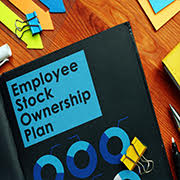The National Center for Employee Ownership (NCEO) estimates that about 6,500 U.S. companies have employee stock ownership plans (ESOPs). Many owners of closely held businesses use these plans as an exit strategy. Although ESOPs offer a variety of benefits, including significant tax advantages, they’re not right for every company.
ESOP ABCs
The IRS defines an ESOP as a retirement plan that allows employees to own stock in the companies that employ them. Any company that meets the IRS requirements and has stock can sponsor an ESOP for its employees if the ESOP invests primarily in the securities of the employer.
To establish an ESOP, an employer typically creates a trust to which it will make annual contributions of either new shares of its own stock or cash to purchase existing shares. An ESOP also can obtain financing to purchase shares (with the sale price set by an independent business valuation professional). This is known as a leveraged ESOP. In that case, the company contributes sufficient cash every year to cover the principal and interest payments.
The shares in the trust are allocated to individual employee accounts. Employees usually become eligible for the plan after one year of employment but must be eligible after two service years. Shares are allocated using a formula, often in proportion to compensation. The allocation must satisfy IRS regulations.
A vesting schedule determines what percentage of their accounts employees are entitled to receive at termination, disability, death or retirement. This schedule is also subject to federal requirements. Distributions will be either lump sums or in installments and may be cash or shares, depending on certain circumstances.
Key Advantages
One of the main draws of ESOPs is that they allow business owners to maintain their legacy. As opposed to selling to a third party, an owner has some assurance that his or her business will continue to operate over time, and employees won’t be laid off by an investor with different priorities for the company.
ESOPs also give employees “skin in the game.” Research suggests that employees who hold a piece of the company are highly motivated and productive because they directly benefit from the success of the business. In this way, ESOPs can boost employee morale, foster teamwork, and improve recruitment and retention.
Moreover, ESOPs provide substantial tax benefits to both owners and employees. Contributions are tax-deductible for the company (with certain limitations). A C corporation that sells 30% or more of the business to an ESOP can defer capital gains taxes if it reinvests the sale proceeds into “qualified replacement property.” S corporations that are wholly owned by ESOPs aren’t subject to federal income tax. Employees pay no taxes on contributions until they receive a distribution, and they can defer those taxes by rolling over distributions into another qualified retirement account.
Notable Disadvantages
ESOPs have some potential drawbacks, though — for starters, the steep cost. According to the NCEO, ESOPs generally cost $100,000 to $300,000 to establish, and even more for large, complex deals. Ongoing costs can run $20,000 to $30,000 annually, with costs rising with size. If several employees leave the company in a short period of time, it could face a cash crunch.
In addition, ESOP deals generally don’t reward sellers with much of a sales premium. By law, an ESOP can pay only fair market value for shares in the company. An outside buyer may well pay more than fair market value, based on buyer-specific synergies.
ESOPs also are burdensome to administer. (See “IRS Issues a Compliance Caveat,” above.) They’re considered a type of retirement plan, so they’re subject to the numerous rules and regulations under the Employee Retirement Income Security Act, as well as state requirements. Compliance will require the hiring of various professionals, including a trustee, adding to the costs.
Likely Candidates
Which companies make good candidates for ESOPs? Entity type matters because only S corporations, C corporations and limited liability companies (LLCs) taxed as S corporations or C corporations are eligible.
Also businesses should be on solid financial ground with reliable earnings and cash flow. Without solid financials, a company could end up scrambling to cover its contribution and distribution obligations. A strong management team and clear succession plan are essential, too. That’s particularly so for a leveraged ESOP, as lenders will want to see evidence that the company can service its debt.
Test the Waters
If you’re considering an ESOP, first conduct a feasibility study to determine how it might play out for your business. Contact your tax and financial advisors for more information.

IRS Issues a Compliance Caveat
The IRS recently cautioned businesses about a range of compliance issues that can jeopardize the good standing of employee stock ownership plans (ESOPs). The tax agency warned that it’s executing enforcement strategies to ensure employers’ compliance with a variety of tax requirements.
The IRS highlighted several issues, including:
- Valuation of employee stock,
- Prohibited allocation of shares to disqualified persons, and
- Failure to follow the requirements for ESOP loans.
It also cautioned businesses about potentially abusive promoted arrangements. For example, the IRS described a scheme where a business creates a management S corporation whose stock is wholly owned by an ESOP for the sole purpose of diverting taxable business income to the ESOP. Your tax and financial advisors can help you avoid these potential pitfalls and comply with the regulations of the IRS and U.S. Department of Labor.